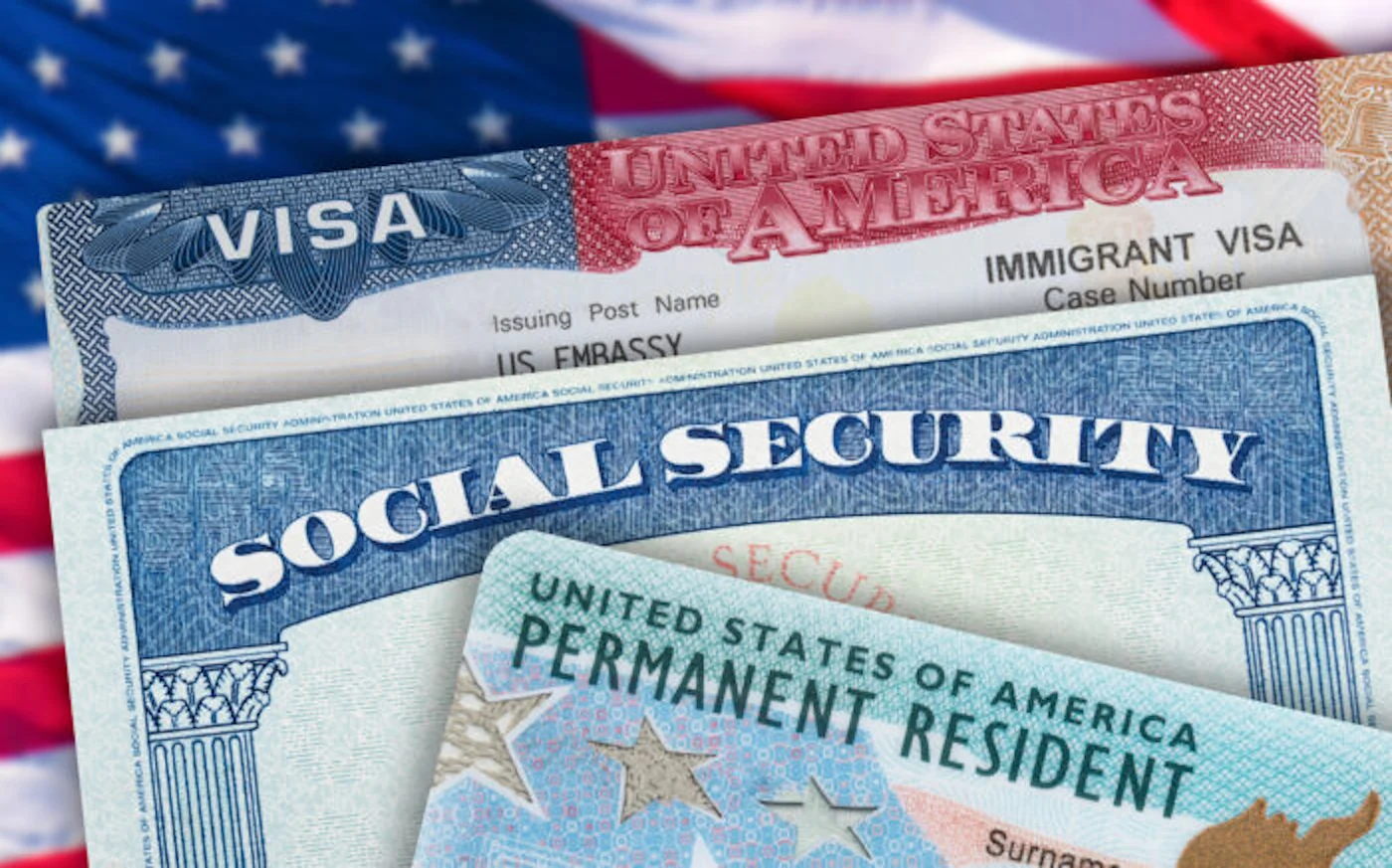Applying for a family-based green card can be one of the most significant and life-changing steps for immigrants in the United States. For many, this process is the path to permanent residency, family reunification, and, eventually, U.S. citizenship.
However, legal help can be expensive, and it’s not uncommon for applicants to consider filing without an immigration attorney. While it is entirely legal to prepare and submit your own application, it’s important to understand the risks, common pitfalls, and strategies to avoid costly mistakes.
This comprehensive guide explains the risks of filing without professional help, details best practices for managing the process yourself, and provides practical tips to help ensure your application has the highest chance of success.
1. Understanding the Family-Based Green Card Process
Before diving into the risks and best practices, it’s important to understand what a family-based green card is and how the application process works.
1.1 What is a Family-Based Green Card?
A family-based green card allows a foreign national to live and work permanently in the United States based on a qualifying relationship with a U.S. citizen or lawful permanent resident (LPR). These visas fall into two main categories:
- Immediate Relative (IR) Green Cards — For the closest family members of U.S. citizens. There is no annual cap, meaning visas are always available. Examples:
- Spouse of a U.S. citizen
- Unmarried child under 21 of a U.S. citizen
- Parent of a U.S. citizen (petitioner must be at least 21)
- Family Preference (F) Green Cards — For more distant relatives. These have annual limits, which can lead to long waiting periods. Examples:
- Unmarried adult children (21+) of U.S. citizens (F1)
- Spouses and unmarried children of permanent residents (F2A and F2B)
- Married children of U.S. citizens (F3)
- Siblings of U.S. citizens (F4)
1.2 The Basic Application Steps
Although each case can vary, the process generally includes:
- Filing the Petition (Form I-130) The U.S. citizen or permanent resident files Form I-130 with U.S. Citizenship and Immigration Services (USCIS) to establish the qualifying relationship.
- Waiting for Approval and Visa Availability
- For immediate relatives, visa availability is immediate.
- For preference categories, you may wait months or years depending on the visa bulletin.
- Applying for the Green Card This step depends on whether the applicant is inside or outside the U.S.:
- Adjustment of Status (Form I-485) if already in the U.S.
- Consular Processing if outside the U.S.
- Biometrics Appointment USCIS will collect fingerprints, photographs, and a signature.
- Interview An in-person interview is usually required, especially for marriage-based cases.
- Approval or Denial If approved, the applicant receives the green card in the mail. If denied, USCIS will provide reasons, and appeals or re-filing may be possible.
2. Why Some People File Without an Attorney
Hiring an immigration lawyer can cost anywhere from $2,000 to $6,000 for a family-based green card case, depending on complexity. Some applicants decide to file on their own for reasons such as:
- Cost Savings — Avoiding attorney fees can be appealing when budgets are tight.
- Perceived Simplicity — Belief that the case is “straightforward” (e.g., U.S. citizen sponsoring a spouse).
- Past Experience — Some have successfully filed other USCIS forms and feel confident repeating the process.
- Access to Online Resources — The availability of USCIS instructions, forums, and guides may create a sense of self-sufficiency.
While these are understandable motivations, it’s important to weigh them against the possible downsides.
3. Risks of Filing Without an Attorney
Filing your own application comes with real risks. Mistakes or omissions can lead to delays, requests for additional evidence, or outright denial.
3.1 Missing or Incorrect Forms
USCIS requires specific forms, each with precise instructions. Submitting the wrong form version, failing to sign in all required places, or leaving sections blank can result in rejection.
3.2 Incorrect Filing Fees
USCIS fees change periodically. Sending the wrong payment amount or incorrect payment method will result in your application being returned unprocessed.
3.3 Incomplete Evidence
Many denials occur because applicants fail to submit enough proof of the family relationship. For example:
- For a marriage-based application, insufficient evidence of a bona fide marriage can trigger suspicion of fraud.
- Missing civil documents (birth certificates, marriage certificates, translations) can delay processing for months.
3.4 Misunderstanding Immigration Law
Even a case that seems simple can involve complex legal issues:
- Previous visa overstays or unlawful presence
- Prior deportations or immigration violations
- Criminal records, even minor ones
- Public charge considerations
Without legal training, it’s easy to miss how these factors affect eligibility.
3.5 Delays Due to Requests for Evidence (RFEs)
If USCIS issues an RFE because information is unclear or missing, your case can be delayed for months. An attorney can often anticipate and prevent these issues.
3.6 Increased Risk of Denial
While USCIS does not require you to have a lawyer, studies show that applicants with legal representation generally have higher approval rates — especially in complex cases.
4. Best Practices for Filing Without an Attorney
If you decide to file your own family-based green card application, careful preparation and organization are essential. These best practices can help reduce risks.
4.1 Start with Official USCIS Resources
The most reliable and up-to-date instructions come directly from USCIS:
- USCIS Form I-130 page
- USCIS Form I-485 page
- The USCIS Policy Manual
Print the instructions and checklists. Follow them exactly.
4.2 Understand Your Eligibility
Before filing, confirm that:
- Your relationship fits into an eligible category.
- You meet the requirements for Adjustment of Status or Consular Processing.
- Any past immigration or criminal issues are addressed.
4.3 Gather Strong Evidence
For a strong application:
- Provide multiple forms of proof (photos, joint leases, bank accounts, insurance policies).
- Include certified translations for any documents not in English.
- Use consistent names, dates, and addresses across all documents.
4.4 Keep Copies of Everything
Scan or photocopy all forms, evidence, and correspondence. Keep these in an organized folder or binder for quick reference.
4.5 Use a Cover Letter
A professional cover letter can help USCIS officers quickly understand your case and locate documents. Include:
- List of forms enclosed
- Summary of relationship and eligibility
- Organized index of supporting evidence
4.6 Track Your Case Status
After filing:
- Use the USCIS online case status tool.
- Sign up for email/text alerts.
- Keep your mailing address updated with USCIS.
4.7 Prepare for the Interview
If your case requires an interview:
- Review your forms and evidence beforehand.
- Practice answering questions honestly and clearly.
- Bring updated relationship evidence (especially for marriage cases).
5. Situations Where You Should Strongly Consider Hiring an Attorney
While some cases can be handled without legal help, certain situations almost always require professional guidance:
- Past Immigration Violations (overstay, illegal entry, deportation orders)
- Criminal History
- Complex Family Situations (adoption, step-children, custody issues)
- Prior Denials
- Public Charge Concerns (income, affidavit of support issues)
If any of these apply, the cost of an attorney may be far less than the cost of a denial.
6. Tips for Avoiding Common Mistakes
- Use the Latest Form Versions — Download directly from USCIS.
- Check All Signatures — Missing one can cause a rejection.
- Review for Consistency — Names, dates, and places should match across all documents.
- Don’t Guess on Questions — If unsure, research or call USCIS for clarification.
- Submit a Complete Package — Missing a single required item can delay your case.
7. Balancing Risk and Cost
The choice to file without a lawyer often comes down to balancing:
- Financial Savings — Immediate benefit of avoiding legal fees.
- Risk Exposure — Potential for costly delays or denials.
For straightforward, well-documented cases, self-filing may be realistic. For anything more complicated, legal help can be an investment in peace of mind.
8. Final Thoughts
Filing a family-based green card application without an attorney is possible and legal, but it’s not without risks. Success depends on your ability to follow detailed instructions, gather complete evidence, and anticipate potential issues.
If you decide to proceed on your own:
- Use official resources.
- Be meticulous with paperwork.
- Double-check everything before submission.
- Stay proactive about tracking your case.
The process is more than just filling out forms — it’s about telling your story in a way that meets legal requirements and convinces USCIS of your eligibility. By understanding both the risks and best practices, you can make informed decisions and give yourself the best possible chance of success.
Frequently Asked Questions (FAQ)
1. Is it legal to file a family-based green card application without an attorney?
Yes. U.S. Citizenship and Immigration Services (USCIS) does not require you to have an attorney for a family-based green card application. Many applicants successfully file on their own, provided they follow USCIS instructions carefully and submit complete, accurate documentation.
2. What are the main risks of filing without legal help?
The biggest risks include submitting the wrong forms, paying incorrect fees, missing required evidence, and misunderstanding immigration laws. These mistakes can lead to delays, Requests for Evidence (RFEs), or denials.
3. How much money can I save by not hiring an attorney?
Attorney fees for a family-based green card case typically range from $2,000 to $6,000, depending on complexity. Filing on your own avoids these costs but increases the responsibility for ensuring your application is correct.
4. Can I use online templates or guides to help me file?
Yes, but you should always cross-check them with official USCIS instructions and form versions. Immigration laws and requirements change, and unofficial templates may be outdated or incomplete.
5. What happens if I make a mistake on my green card application?
It depends on the mistake. Some errors can be corrected after USCIS issues an RFE. Others may lead to application rejection or denial, which could cost you time, money, and in some cases, affect your immigration status.
6. Do I need to include original documents or copies?
USCIS generally requires copies unless specifically asking for originals. If documents are not in English, you must include a certified translation.
7. How long does the family-based green card process take?
Processing times vary by category, USCIS workload, and whether you’re applying from inside or outside the U.S. Immediate relative cases can take 10–18 months, while family preference categories may take several years.
8. Is the process different for applicants inside versus outside the U.S.?
Yes. Applicants inside the U.S. usually file Form I-485 for Adjustment of Status, while applicants abroad go through Consular Processing via the National Visa Center (NVC) and a U.S. embassy or consulate.
9. Will filing without an attorney affect my chances of approval?
Not directly. USCIS does not give preference to attorney-filed cases. However, attorneys can help avoid mistakes and anticipate issues, which can indirectly improve approval rates.
10. When should I definitely hire an immigration lawyer?
You should strongly consider hiring a lawyer if you have a criminal record, prior immigration violations, complex family circumstances (such as adoption or custody issues), prior denials, or income-related concerns that could affect your affidavit of support.
Pro Tips for Filing a Family-Based Green Card Without an Attorney
Even if you feel confident handling the application on your own, a few insider strategies can make the process smoother and reduce the risk of delays or denials.
1. Create a Personal Filing Checklist
Don’t just rely on USCIS’s generic checklist. Create your own based on your specific case type (spousal, parent, sibling) and the documents you personally need. Cross things off as you gather them to avoid missed items.
2. Over-Document Your Relationship
For marriage-based applications, submit more evidence than you think is necessary. Include photos over different time periods, joint financial accounts, bills, travel records, and affidavits from friends or family. This makes it harder for USCIS to question the authenticity of your marriage.
3. Use Tabs or Separators in Your Packet
When sending a paper application, organize sections with clearly labeled tabs or colored sheets. Immigration officers process dozens of cases daily — making your file easy to navigate can work in your favor.
4. Keep Digital Copies of Everything
Scan your entire packet before mailing it. If something is lost in transit or USCIS issues an RFE, you can quickly reprint and resubmit the exact documents.
5. Track Delivery and Save Receipts
Always send your application via a trackable method (USPS Priority Mail, FedEx, UPS) and save the delivery confirmation. This protects you if USCIS claims it never received your forms.
6. Monitor the USCIS Processing Times
Check the USCIS website’s processing times tool regularly for your form type and service center. If your case is outside normal time frames, you may be eligible to submit an inquiry.
7. Prepare for the Interview Like a Job Interview
Practice answering questions clearly and concisely. Review your submitted forms so you’re not caught off guard by dates, names, or details. Bring updated relationship proof and any documents USCIS requests in your interview notice.
8. Don’t Ignore USCIS Notices
Respond immediately to any Request for Evidence (RFE) or Notice of Intent to Deny (NOID). These have strict deadlines, and even one missed day can cause a denial.
9. Stay Informed About Immigration Policy Changes
USCIS requirements can change without much notice. Sign up for USCIS email alerts or check reputable immigration news sources to avoid filing outdated forms or missing new requirements.
10. Know When to Get Professional Help Mid-Process
If you receive an RFE you don’t understand, if your case is denied, or if an interview becomes complicated, it’s worth bringing in an attorney at that point. A lawyer can step in even after you’ve started the process.



